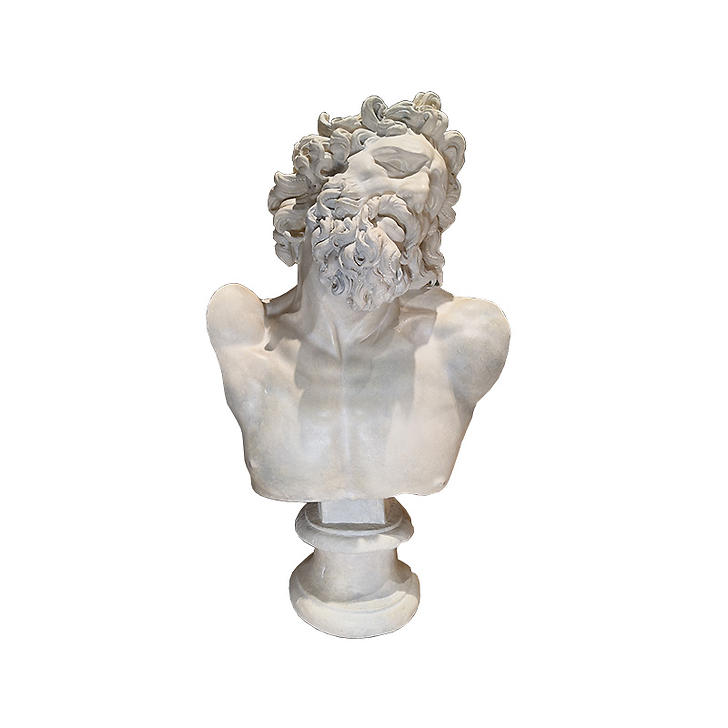Sculpture Bust of Laocoon Guiliano Finelli
PF006111
Original kept in the Vatican Museum. This group of statues was discovered in 1506 in Rome, on the Esquiline, and was immediately identified with the Laocoon described by Pliny as a masterpiece of the Rhodesian sculptors Agesander, Athenodorus and Polydorus. During the Trojan War, Laocoon, Trojan priest...
Read more
Original kept in the Vatican Museum. This group of statues was discovered in 1506 in Rome, on the Esquiline, and was immediately identified with the Laocoon described by Pliny as a masterpiece of the Rhodesian sculptors Agesander, Athenodorus and Polydorus. During the Trojan War, Laocoon, Trojan priest of the god Apollo, had opposed the entry of the wooden horse into the city walls. Athena and Poseidon, in favor of the Greeks, sent two monstrous snakes by sea which embraced Laocoon and his two sons with their spires.
From a Roman perspective of history, the death of these innocents was functional to the flight of Aeneas and thus to the founding of Rome.
A sculpture of this importance could not escape the notice of Julius II (1503-1513), who promptly purchased it to place it in the Courtyard of the Statues and make it the ideological centerpiece of his decorative program. The chronology of this marble masterpiece is much debated, and critics currently favour a dating of around 40-30 BC.
For sale at the Musée du Louvre bookshop-boutique, by appointment only, or to order on the ateliers d'art website: https://ateliers.grandpalaisrmn.fr/en
Close
Sold by GrandPalaisRmn

